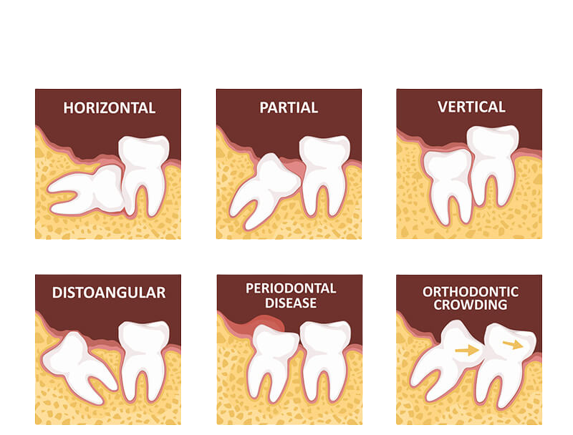Hours of Operation
- Mon-Sat 9:00am – 6:00pm
Sunday Closed
Contact Info
-
Phone: (613) 733-8000
What is wisdom teeth removal in Orleans? An overview
Wisdom teeth removal in Orleans is a painless and generally quick procedure. But a poignant question is, what is a wisdom tooth? Well, wisdom teeth are a set of third molars located at the top and back corners of your mouth. More than half of the population has at least one wisdom tooth. Wisdom teeth come in by the time you are 13 years of age.
How to prepare for wisdom teeth removal in Orleans? The ultimate procedure?
- If you are one of those who are feeling a crunching pain in their gums and also in their spine, then this is something you need to do. Yes, you need a wisdom teeth removal in Orleans.
- The procedure begins by fixing an appointment with a dentist, who will thoroughly check the existing condition of your teeth and also make sure to talk about any health problems that you have.
- List any drugs that you take regularly.
- Ask any questions that you have about the surgery.
- Discuss what type of anesthesia you will have. Patients can also be awake during the period of your surgery.
- Once all these things are discussed, you can start with the actual procedure. The procedure takes less than 45 minutes or even less.
There are mainly four types of anesthesia that are provided
- Local: Your doctor will numb your mouth with a shot of local anesthetic like Novocaine, Lidocaine, or mepivacaine. You may also breathe nitrous oxide, or laughing gas, to relax or even doze during surgery. You should feel alert again shortly afterward.
- IV sedation: The surgeon will numb your mouth and give you the drugs through a vein in your arm. This will make you drowsy; you might sleep during the whole procedure.
- General: You’ll either get the drugs through a vein or breathe gas in through a mask. There is nothing to worry about, as you will be sleeping the whole time and will not wake up the entire time the operation is on.
Benefits of Wisdom teeth removal in Orleans
- Prevents and alleviates issues related to teeth.
- Reduces pain
- Eradicates infection
- Finishes the damage that the tooth may have caused to the neighboring teeth.
Wisdom teeth removal in Orleans—how to recover?
A Wisdom teeth removal in Orleans: once the procedure is done, you need to take good care of them. Here is what you need to do.
- Opt for immediate post-operative care; damp gauze for a good 40 minutes. This act helps in easing any sort of pain that the patient is facing.
- Rinsing, spitting or any activity that creates pressure and suction in the mouth must be avoided for least 24 hours. This prevents the formation of a blood clot and prevents its dislodgement.
- Consider using cold compressors on the face for 10 minutes on and 20 minutes off. This will help you to mitigate swelling that has arisen due to the wisdom teeth removal in Orleans:
- Pain management and medication are a must. Follow what your dentist has to say and consider taking some over-the-counter medications or antibiotics to prevent any sores that exist.
- Monitor pain levels and consult your dentist if any discomfort persists or intensifies beyond your expectations.
Frequently Asked Questions (FAQ)
Why do wisdom teeth need to be removed?
Wisdom teeth often cause overcrowding, impaction, or infections. If they don’t have enough space to emerge properly, they can lead to pain, swelling, and damage to surrounding teeth. Removing them prevents complications and maintains oral health.
What is the procedure for wisdom teeth removal in Orleans?
The dentist numbs the area with anesthesia, makes a small incision, and extracts the tooth. Sometimes, the tooth is broken into smaller pieces for easier removal.
Afterward, gauze is placed to control bleeding, and recovery takes about two weeks.
Is wisdom teeth removal painful?
The procedure itself is painless due to anesthesia. Some discomfort may occur afterward, but pain medications help manage it. Most patients recover within a few days and can resume normal activities.
What are the risks of not removing wisdom teeth?
Impacted wisdom teeth can cause infections, cysts, and damage to nearby teeth. They may also lead to overcrowding, making orthodontic treatments less effective. Early removal minimizes these risks.
How should I care for my mouth after wisdom teeth removal?
Avoid hard foods, smoking, and vigorous rinsing for a few days. Use ice packs to reduce swelling and take prescribed medications. Follow your dentist’s instructions for a smooth recovery.
